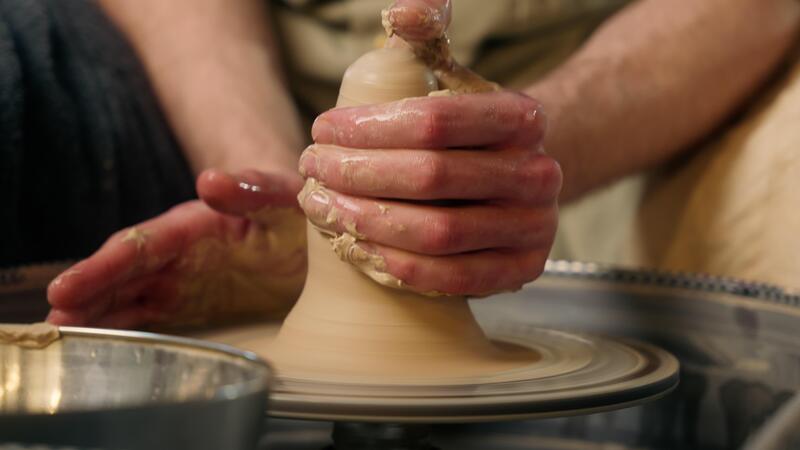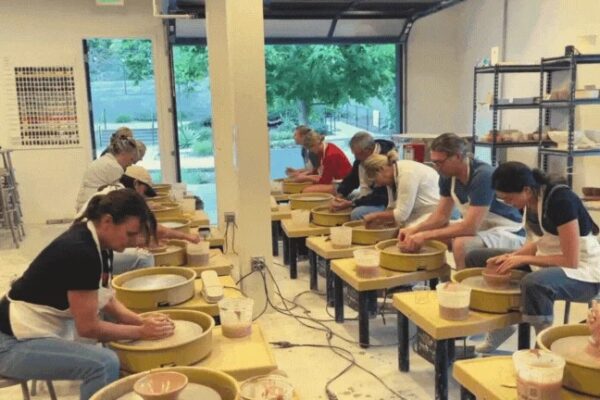
Designing for Life: How Modern Living Spaces Are Evolving to Accommodate Our Hobbies
In the modern era, the concept of “home” has undergone a profound transformation. Once primarily a place of rest and shelter, our living spaces are now multifunctional hubs for work, fitness, education, and personal growth. This shift has cast a spotlight on a critical, often-overlooked aspect of residential design: the accommodation of hobbies. The pursuit of personal passions—from woodworking and painting to urban gardening and fitness—is fundamental to our well-being, yet it frequently clashes with the spatial constraints of contemporary living. As our understanding of holistic health deepens, it’s clear that a home must do more than house us; it must provide a sanctuary for the activities that enrich our lives. This article explores the growing demand for hobby-centric living spaces, examining how architectural innovation, interior design strategies, and community planning are rising to meet the challenge. We will delve into the tangible connection between our environment and our ability to pursue fulfilling pastimes, offering actionable insights for creating a home that nurtures both body and soul.
The Evolving Role of the Home: From Shelter to Sanctuary for Hobbies
The traditional blueprint of a home is being redrawn in real-time. Driven by societal shifts and a greater emphasis on Work-Life Balance, the demand for functional, adaptable living spaces has never been higher. This evolution is not merely about aesthetics; it’s about creating environments that actively support our mental and physical health by making room for what truly matters.
The Post-Pandemic Catalyst for Change
The global shift towards Remote Work acted as a powerful accelerant in this transformation. Suddenly, millions of people were required to integrate their professional lives into their personal sanctuaries. The dining table became a boardroom, and the spare bedroom an office. This forced convergence highlighted the inadequacy of inflexible floor plans and underscored the need for dedicated zones within the home. As the lines blurred, the importance of carving out space for non-work-related activities—for hobbies—became a critical component of maintaining Mental Health. A home that can’t accommodate a yoga mat, a painter’s easel, or a collection of gardening tools can quickly feel less like a refuge and more like a beautifully designed cage. This realization has prompted a re-evaluation of residential priorities, influencing everything from Home Improvement projects to new construction trends.
The Psychological Impact of ‘Hobby-less’ Spaces
The connection between engaging in hobbies and improved well-being is well-documented. Hobbies provide a powerful outlet for Stress Management, foster a sense of accomplishment, and promote states of flow and Mindfulness. However, the inability to pursue these activities due to spatial limitations can have a significant negative impact. A woodworker without a workshop or a cyclist with no place to store and maintain their bike experiences a constant, low-level frustration. This “hobby-less” existence can contribute to feelings of stagnation and burnout. The principle of “out of sight, out of mind” is particularly relevant; when tools and materials are packed away in inaccessible storage, the creative spark is often extinguished before it can ignite. Therefore, designing a home with hobbies in mind is a direct investment in the long-term Health & Wellness of its inhabitants.
Defining the ‘Hobby Space’ Spectrum
Not all hobbies have the same spatial footprint. Understanding this spectrum is key to finding effective design solutions. We can categorize them into three main tiers:
- Minimalist Hobbies: These require very little dedicated physical space and can be integrated easily into most living environments. Examples include Reading, digital art, journaling, Meditation, and learning a language. The primary need is a quiet, comfortable corner.
- Contained Hobbies: These activities require a dedicated area but can often be confined to a specific room or a large closet. This category includes Yoga News and practice, home fitness, sewing, crafting, and small-scale DIY Projects. A flex room or a well-organized corner of a larger space is often sufficient.
- Expansive Hobbies: These are the most spatially demanding passions, traditionally requiring a basement, a large shed, or a garage. Woodworking, pottery (with a kiln), car maintenance, storing gear for Outdoor Living (like kayaks and camping equipment), and large-scale Urban Gardening fall into this category. It is this tier that presents the greatest challenge for residents of apartments and condos.
Innovations in Residential Design: Making Room for Passion
The real estate and design industries are actively responding to the demand for hobby-friendly living. The solution isn’t always a bigger footprint, but rather a smarter, more flexible use of space, both private and communal. This new focus on Lifestyle News and design is reshaping what buyers expect from a modern home.

Multi-Family Dwellings Get a Makeover
For decades, the primary trade-off for the convenience of condo or apartment living was the sacrifice of private, expansive hobby space. Today, forward-thinking developers are challenging that paradigm to compete with single-family homes. The solution lies in robust, well-designed amenities that go far beyond a simple gym or pool. We are seeing a rise in Community Living developments that feature:
- Communal Workshops: Shared “maker spaces” equipped with workbenches, 3D printers, and heavy-duty tools that are impractical for individual apartment ownership. This fosters a sense of community and enables residents to pursue ambitious DIY Projects.
- Oversized, Secure Storage: Recognizing the need for storing bulky equipment, new buildings are offering large, secure storage lockers or even private, single-car “sub-garages” capable of holding kayaks, bicycles, and other outdoor gear.
- Specialized Rooms: Soundproof music practice rooms, art studios with proper ventilation and natural light, and community kitchens for large-scale Food & Cooking projects are becoming premium selling points.
These features transform a multi-family building from a collection of isolated units into a vibrant ecosystem that supports a diverse range of interests, directly addressing a key advantage previously held by standalone houses.
The Rise of the ‘Flex Space’
Within the walls of an individual unit, flexibility is the new luxury. Modern Interior Design is moving away from rigidly defined rooms and towards adaptable “flex spaces.” This might be a small room designated as a home office, which can easily be converted into a craft room, a meditation space, or a home gym. The key to successful flex spaces lies in smart Home Decor and furniture choices. Murphy beds that fold away to reveal a desk, modular shelving that can be reconfigured, and rolling workbenches are all part of a design language that prioritizes multi-functionality. This approach, rooted in principles of Minimalism and smart Organization Tips, allows residents to tailor their environment to their evolving needs.
Adapting Existing Spaces: A DIY Approach
For those in existing homes, creating hobby space often requires a creative, hands-on approach. Effective Home Organization is the first and most critical step. A thorough process of Decluttering can reveal untapped square footage. From there, homeowners can implement clever solutions:
- Go Vertical: Garages, basements, and even closets have vast, underutilized vertical space. Installing floor-to-ceiling shelving, pegboards, or wall-mounted racks can store an incredible amount of gear and materials, freeing up floor space for a dedicated work area.
- Convert a Closet: A walk-in closet or even a standard-sized one can be transformed into a “cloffice” (closet-office) or a compact crafting nook, complete with a small desk, shelving, and good lighting.
- Activate Outdoor Areas: A small balcony can become a thriving hub for Urban Gardening with vertical planters and container gardens. A covered patio can be outfitted with an outdoor workbench for messier projects, enhancing Outdoor Living possibilities.
Beyond Four Walls: Hobbies, Community, and Financial Well-being
The integration of hobby spaces has implications that extend far beyond the individual, influencing community dynamics, personal finances, and our overall approach to a balanced life.
Fostering Community Through Shared Spaces
The development of communal hobby areas within residential complexes does more than just solve a storage problem; it builds a foundation for genuine social connection. A shared tool library or a community garden becomes a natural gathering place where residents with similar interests can meet, collaborate, and learn from one another. This fosters a sense of belonging and has a significant Social Impact, combating the isolation that can be common in urban environments. These shared resources also align with principles of Sustainable Living and a sharing economy, reducing redundant consumption and promoting a more Eco-Friendly Living mindset.

The Financial Angle: Hobbies and Home Value
From a Personal Finance perspective, investing in hobby space can yield significant returns. A well-designed and finished workshop, a dedicated home gym, or a beautifully landscaped garden can increase a property’s resale value and appeal. This is a tangible form of Financial Planning, turning a personal passion into a home asset. Furthermore, having the space to pursue hobbies at home can lead to direct savings. A home gym eliminates monthly membership fees. A robust kitchen setup for Meal Planning and cooking Healthy Recipes reduces spending on takeout. The ability to perform your own repairs and DIY Projects saves on labor costs. These small savings, guided by smart Budget Tips, can accumulate into substantial amounts over time.
Work-Life Balance and Personal Development
In our hyper-connected world, the ability to mentally “clock out” is a vital skill for preventing burnout. Hobbies provide a necessary psychological boundary between our professional and personal lives. Engaging in a tactile, creative, or physical activity offers a complete mental reset, which is a cornerstone of effective Work-Life Balance. This is not mere leisure; it is a form of active recovery and Personal Development. Mastering a new skill, whether it’s baking sourdough, building a bookshelf, or learning to code for a Smart Home project, provides a sense of agency and accomplishment that is entirely separate from career achievements. These pursuits are a powerful engine for Self-Improvement and lifelong learning.
Best Practices for Carving Out Your Creative Nook
Whether you are buying, renting, or improving your current home, a strategic approach can help you secure the space your passions deserve. Prioritizing this need is a key step toward a more fulfilling lifestyle.
For Homebuyers and Renters
When evaluating a potential property, look beyond the basic stats of bedrooms and bathrooms. Consider the following:
- Assess Storage Thoroughly: Look for deep closets, garage space, a basement, or an attic. Ask about community storage options in multi-family buildings.
- Identify the ‘Flex Space’: Is there a den, a loft, a wide hallway, or a spare room that could be adapted for your hobby?
- Evaluate Community Amenities: Scrutinize the quality and accessibility of shared spaces like workshops, gardens, or fitness centers. Are they well-maintained and genuinely usable?
- Consider the Neighborhood: Is there a nearby community center, maker space, or park that can support your interests?
For Homeowners
If you’re looking to optimize your current space, focus on smart, targeted improvements:
- Start with a Ruthless Declutter: Before you build, you must clear. Employ Minimalism principles to get rid of anything that doesn’t serve a purpose to reclaim valuable square footage.
- Invest in Multi-functional Furniture: A coffee table with hidden storage, an ottoman that opens up, or a bed with built-in drawers can make a huge difference.
- Upgrade Your Lighting: Good lighting can make a small space feel larger and more functional, which is especially critical for detailed work like crafting or painting.
- Embrace Technology for Home: Use digital tools for planning your space. Compact, modern tools often have smaller footprints than their older counterparts.
Conclusion
The conversation around our homes is shifting from a narrow focus on square footage and finishes to a broader, more meaningful dialogue about lifestyle and well-being. A home is no longer just a financial asset but an essential platform for personal fulfillment. The ability to seamlessly integrate our hobbies into our living environment is a new standard of modern luxury—one defined not by opulence, but by functionality, flexibility, and the freedom to pursue our passions. As developers, designers, and individuals, recognizing and planning for this “hobby space” is a critical investment in our Mental Health and overall quality of life. By thoughtfully designing our private spaces and fostering community-oriented solutions, we can build homes that don’t just shelter our bodies, but truly nurture our spirits.
Archives
- December 2025
- November 2025
- October 2025
- September 2025
- August 2025
- October 2023
- September 2023
- August 2023
- July 2023
- June 2023
- May 2023
- April 2023
- March 2023
- February 2023
- January 2023
- December 2022
- November 2022
- October 2022
- September 2022
- August 2022
- June 2022
- May 2022
- April 2022
- March 2022
- January 2022
- December 2021
- November 2021
- October 2021
- August 2021
- November 2020
- July 2020
- May 2020
- April 2020
- March 2020
- August 2018
- July 2018
- June 2018
- April 2018
- March 2018
Categories
- Age Groups
- AI/ML
- Alternative Medicine
- Animal Health
- Animal Husbandry
- Animals
- Anti-Aging
- Architectural Design
- Auditory Science
- Augmented Reality
- Automation
- Babies
- Baby
- Beauty & Skincare
- Biohacking
- Biomechanics
- Book Reviews
- Breastfeeding
- Budgeting
- Budgeting Strategies
- Business
- Cardiovascular Health
- Career Advice
- Career Development
- Career Growth
- Cats
- Chess
- Chronobeauty
- Circular Economy
- Cleaning Tips
- Cloud Computing
- Cognitive Health
- Cognitive Performance
- Cognitive Science
- Community
- Community Building
- Community Engagement
- Community Living
- Computer Vision
- Consumer Guides
- Consumer Trends
- Container Gardening
- Content Analysis
- Content Non-Technical
- Content Strategy
- Cosmetic Chemistry
- Cultural Events
- Cycling
- Data Analysis
- Data Engineering
- Data Science
- Design Psychology
- Developer Productivity
- Diet
- Diet
- Digital Identity
- Digital Media
- Digital Wellbeing
- DIY Projects
- Dogs
- Engineering Culture
- Entertainment News
- Environmental Impact
- Environmental Science
- Equity Compensation
- Ethical AI
- Exercise
- Exercise Science
- Exercise Technique
- Exotic Pets
- Fall Gardening
- Family
- Family Health
- Family Life
- Fashion Business
- Fashion Industry
- Fashion News
- Fashion Tech
- Financial Analysis
- Financial Optimization
- Financial Planning
- Flooring Maintenance
- Food
- Food Psychology
- Food Safety
- Food Tech
- Functional Fitness
- Functional Training
- Future Of Work
- Garden Care
- Garden Maintenance
- Gardening Tips
- Greece
- Greek
- Greek Food
- Gymnastics
- Hardware Engineering
- Health
- Health And Wellness
- Health Informatics
- Health Science
- Health Tech
- Healthcare Management
- Healthy Eating
- Healthy Recipes
- Holistic Health
- Holistic Wellness
- Home & Living
- Home Decor
- Home Financing
- Home Health
- Home Improvement
- Home Organization
- Horticulture
- Identity Management
- Industrial Design
- Industry Analysis
- Infant Nutrition
- Infrastructure Management
- Ingredient Deep Dive
- Integrative Health
- Integrative Medicine
- Interior Design
- Internet of Things
- Internet of Things (IoT)
- Invalid Request
- Investment Strategies
- Investment Strategy
- IoT
- Kids
- Leadership Development
- Learning Strategies
- Lifestyle
- Lifestyle Brands
- Lifestyle News
- Lifestyle Optimization
- Literary Criticism
- Literature
- Logistics Management
- Material Science
- Materials Science
- Meal Planning
- Media Analysis
- Meditation
- Mental Health
- Mental Performance
- Mental Wellness
- Miami
- Miami Food
- Mind And Body
- Minimalism
- Mobile Development
- Neuroscience
- No Applicable Categories
- Nutrition
- Nutrition News
- Operating Systems
- Operational Resilience
- Opinion
- Organization Tips
- Outdoor Living
- Over 40
- Over 50
- Over 60
- Parenting
- Parenting
- Parenting Strategies
- Performance
- Personal Development
- Personal Finance
- Personal Growth
- Personal Productivity
- Pet Care
- Pet Safety
- Philosophy
- Politics
- Productivity
- Protein
- Psychology
- Psychology of Space
- Reading Culture
- Real Estate Investment
- Recipes
- Regulatory Compliance
- Remote Work
- Renovation Planning
- Resource Management
- Responsible Pet Ownership
- Retail Strategy
- Robotics
- Science
- Seafood
- Seasonal Gardening
- Security
- Self-Care
- Skincare Science
- Skincare Trends
- Sleep
- Sleep Health
- Smoothies
- Social Impact
- Soft Skills
- Soil Health
- Spatial Computing
- Spatial Design
- Stress Management
- Supplements
- Sustainability
- Sustainability Science
- Sustainable Engineering
- Sustainable Fashion
- Systems Engineering
- Tax Optimization
- Tax Strategy
- Tech Investment
- Travel
- Travel News
- Travel Safety
- Travel Tips
- Trend Analysis
- Uncategorized
- Urban Planning
- User Experience
- Veggie
- Virtual Events
- Volunteering
- Wealth Management
- Wearable Technology
- Wellness
- Wellness Technology
- Work-Life Balance
- Workplace Culture
- World
- Writing
- Writing Skills
- Yoga News
- Zero Waste




Leave a Reply